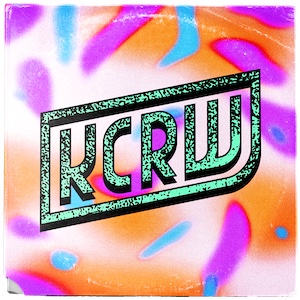Singer Rhiannon Giddens, a member of the Carolina Chocolate Drops, a group specializing in old-timey music, just released her first solo album. On it is her amended cover of a well-known classic that goes way back in time, "Black is the Color of My True Love's Hair." Giddens new version is uptempo, feel-good, and infectious. Her solo debut is auspicious; she is a fabulous singer with a bright future ahead of her.
Hearing "Black is the Color of My True Love's Hair" again reminds me of its colorful history. Most of us are familiar with fellow North Carolinian Nina Simone's soulful 1964 rendition. As one of her most popular standards, the song has been associated with Nina ever since. However, this timeless classic has an intriguing history that can actually be traced much further back.
Famed folklorist and musicologist, the late Alan Lomax, attributes "Black is the Color of My True Love's Hair" to Scottish origin, sometime during the 19th century. There's a line in the original version of the song: "I go to the Clyde to mourn and weep / But satisfied I could never sleep," referring to the River Clyde in Scotland. The folk tune made its way across the Atlantic, probably in the company of Scottish immigrants, many of whom settled in North Carolina and Appalachian America. The song was first collected by English folk music archivist, Cecil Sharp, who notated and recorded it during a 1916 trip to North Carolina, which he then published in his English Folk Songs of the Southern Appalachians (1917).
But it was Kentucky folksinger and collector, John Jacob Niles' variation of "Black is the Color of My True Love's Hair," which rooted itself in the traditional American folk music canon. At his father's request, Niles adapted the lyrics, which he set to a new melody, featured in his 1941 album, John Jacob Niles Sings American Folk Songs, and it's his version that has inspired countless artists since.
Still, the most famous version of them all, is Nina Simone's 1964 classic recording for the Philips label. In covering this timeless standard, successive artists have shifted the song's point of view back-and-forth to tell their own personal story, and, therein lies the beauty of "Black is the Color of My True Love's Hair": female vocalists sing this ballad to their men; the men dedicate it to their enamoradas.
Other versions include an adaptation by Italian composer Luciano Berio, sung by soprano Cathy Berberian in a suite called Folk Songs, released by RCA in 1972. I've also decided to feature three other early versions of the song: a 1962 recording by Karen James; and an a cappella one by the late Pete Seeger. Both James and Seeger were part of the folk revival of the 1950–60s.
Next we have an overdubbed choral version by Peter Hollens, an artist I just discovered while researching this post. I also came across a version by The Hi-Lo's, an all-male a cappella quartet, who do a nice four-part harmony in their rendition of "Black is...," (The Hi-Lo's were a big influence on Herbie Hancock.) We'll also listen to Baez herself singing a cover from the folk revival movement of the early 1960s.
Finally, let's end with another choral version of "Black is the Color of My True Love's Hair" by the wonderful Dale Warland Singers, a group I featured over the years that I love. Anyhow, with so many other versions of this American standard, I'm curious to know what your favorite version is!

